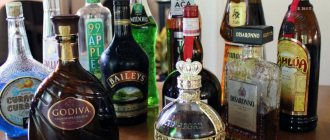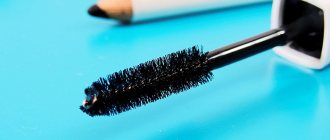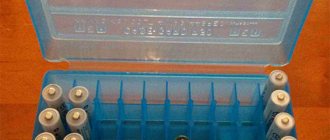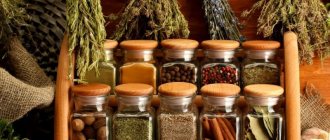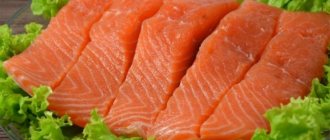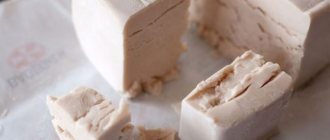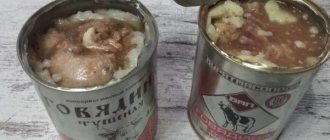Kvass is one of the national Slavic drinks, the popularity of which has not fallen for many hundreds of years. Previously, it was used all year round to quench thirst and for medicinal purposes. Both peasants and rich people prepared and drank kvass. There were many different recipes, but traditionally this drink was made on rye bread with yeast or barley malt. Its properties are associated with manufacturing technology, when lactic acid bacteria are formed during the fermentation process. Nowadays you can buy bread kvass in stores; it is produced by different companies. But a homemade drink prepared according to traditional recipes turns out to be more healthy and tasty.
About the drink itself
Kvass is a foamy, low-alcohol drink obtained as a result of lactic acid fermentation. The amount of alcohol depends on aging, composition and manufacturing technology, usually ranging from 1 to 3%. In industrially prepared kvass it is lower – from 0.5 to 1.2%. The calorie content of the drink is from 25 to 35 kcal.
Kvass is prepared from rye bread, crackers or flour. In order for the fermentation process to begin, yeast or kvass wort is added. The result is a light brown or caramel-colored carbonated drink with stable white foam. Its taste is tart, sour, refreshing. The aroma is pleasant, bready.
Kvass is considered a national Slavic drink, although it was known in Ancient Egypt and Babylon. In Rus' it has been prepared and drunk for more than a thousand years. Even in ancient times, people noticed that it not only quenches thirst, but also restores strength, elevates mood, and invigorates. For ordinary people, this drink was often the main dish. It is no coincidence that the expression “living from bread to kvass” has survived to this day, which means living in poverty.
How to choose
Homemade kvass made with your own hands is much healthier than store-bought kvass. If you make the starter yourself, wait for it to ferment, and then control the entire process of preparing the drink and be able to regulate its acidity level and taste, the product will turn out excellent. Homemade drinks can be consumed in any quantity. They are absolutely safe, as they do not contain preservatives, dyes, flavor enhancers or other chemicals.
If you have to buy kvass in a store, you should carefully study its composition. And you should make your choice in favor of a drink that consists of natural ingredients. The composition of kvass should not contain anything other than purified water, rye flour, malt, sugar, and baker's yeast.
The natural drink is labeled “unclarified” and “unfiltered.” At the same time, it would be good to read on the label what technology was used to make the product. The most useful drink is the one obtained as a result of natural fermentation. This must be indicated by the manufacturer in order to draw attention to the natural origin of their products.
If kvass contains unknown additives, it is better not to buy it. This product cannot be considered useful and safe.
Industrial production
Nowadays, kvass on an industrial scale is rarely prepared according to traditional recipes. Drinks produced at the enterprise may contain many preservatives; they are often artificially carbonated and colored. Sometimes kvass is passed off as ordinary soda, which contains kvass concentrate, citric acid, flavorings and other synthetic components.
Real live kvass should contain only malt, kvass wort, yeast, and sugar. It can be of several varieties.
- The healthiest and tastiest is the unfiltered, unclarified one. It is prepared according to traditional recipes. But such a drink cannot be stored for longer than 3-5 days.
- Unfiltered clarified milk loses many beneficial ingredients as a result of processing. But thanks to this, its shelf life is longer than a week.
- Filtered kvass is obtained after purification from various impurities. It is stored for about 2 months.
- Pasteurized is less healthy because it is subjected to heat treatment.
You need to choose a drink in a dark bottle, since kvass deteriorates when exposed to light. It should be opaque, with sediment allowed at the bottom. When shaking, small bubbles and foam appear. The label should read: “obtained as a result of live fermentation.”
You can find bread kvass of various productions on sale.
ATTENTION! The shelf life of unpasteurized produced bread kvass should not exceed 2 months. If it is larger, it is not a natural product.
Of all the drinks produced industrially, only a few can be considered true kvass.
- “Bread Edge” - pasteurized, prepared according to a traditional recipe from malt. It has a rich aroma and a pronounced bready taste.
- “Ochakovsky” is pasteurized, filtered, sour in taste, with a pronounced leaven taste.
- “The Tsar’s Supplies” is live, unfiltered. Contains only sugar, malt extract, yeast.
- “Traditional” from - pasteurized, filtered. Created on the basis of rye flour and malt.
- “Russian Gift Traditional” - filtered, pasteurized. Made according to a traditional recipe.
What does pasteurized kvass mean?
Kvass drink is an unfinished product of alcoholic or alcoholic and lactic acid fermentation. And this product contains living cells of cultural microorganisms.
If you don’t drink it in the first 2 days, then in such a nutrient medium they will continue to develop. The taste of the drink changes greatly.
Pasteurization is the heat treatment of a drink, during which inactivation occurs. That is, the fermentation activity of living microorganisms is lost.
This extends the shelf life of the bottled drink.
Many people want to cool off in the heat and drink draft kvass. But the point of sale from the barrel looks suspicious. In such cases, go to the store and buy bottled pasteurized kvass. Because it is more secure.
With all these processes, the carbon dioxide produced is not enough. Therefore, during production, the product is saturated with carbon dioxide.
Bubbles of carbon dioxide, which are formed naturally as a result of fermentation, are released less intensely when opening the bottle than those introduced.
There is no standard for the level of foam in a drink.
Selection rules:
1. When purchasing kvass, be sure to look at the expiration date on the labels.
2. If you want to buy kvass with a traditional taste, then take one that has undergone minimal processing. Then it should have a short shelf life and should be drunk immediately.
3. If an acidity regulator is indicated on the bottle, this means that the kvass produced is made using a simplified technology. That is, through incomplete alcoholic fermentation. And to bring the acidity level to normal, lactic acid was added to it. Know that you are buying pasteurized kvass.
4. The words “made according to specifications” are written on the label. This means that in addition to sugar, the composition contains sweeteners. They can impart an aftertaste and cause a sore throat. And you most likely will not quench your thirst, but only increase it. In this case, you will not find any added acids or leavening on the labels. And this is also pasteurized kvass.
5. If the label indicates that this is double-fermented kvass. And it also contains lactic acid bacteria. And yet, this is pasteurized kvass, that is, it will not have any beneficial properties.
Benefits and harms
Not everyone knows the benefits of kvass. We only know that it tones and improves mood. But in fact, the drink has many beneficial properties. This was known in ancient times, it was even equated to medicine. Kvass was consumed for vitamin deficiency, loss of strength, indigestion, and infectious diseases. The healing effect of the drink is associated with its composition. It contains a lot of B vitamins, enzymes, lactic acid bacteria, useful minerals, amino acids, dietary fiber, proteins, and organic acids.
Modern research has proven that homemade bread kvass has the following properties:
- strengthens the immune system;
- improves food digestion;
- normalizes intestinal microflora;
- accelerates metabolic processes;
- improves cerebral circulation;
- strengthens tooth enamel, protects against caries;
- helps reduce weight;
- improves the condition of skin and hair;
- relieves hangover;
- increases potency;
- cleanses blood vessels;
- improves mood, helps cope with depression.
The beneficial properties of kvass are explained by its composition and production technology.
You should not abuse this drink, as it has not only benefits, but also harm. You should not drink it if you have gastritis with high acidity, peptic ulcers, gout, colitis, or liver pathologies. It is necessary to limit the consumption of kvass in case of kidney pathologies, cholelithiasis, and vegetative-vascular dystonia.
ATTENTION! Due to the alcohol content, it is not recommended to drink kvass for children under 7 years of age, pregnant and lactating women, and drivers.
Subtleties of cooking
- To prepare kvass, it is best to use special kvass yeast; if there is none, then pressed baker’s yeast or dry yeast will do;
- To give the kvass more piquancy, you can add a spoonful of honey to the finished product before cooling;
- Instead of water, you can use birch sap; this drink has an original taste and will be useful for those who are actively working on weight loss and body shaping.
- The starter is prepared only once; subsequently, the starter that remains after decanting the kvass will be used;
- You cannot cover the fermenting wort with a tight lid, otherwise the contents of the container will simply vomit it out. Use regular gauze or thin cloth;
- Kvass becomes especially rich and tasty already on the second day in the refrigerator;
- The kvass recipe can be adjusted depending on your own taste and ultimately get your signature favorite home drink;
- Rusks for kvass can be lightly toasted in the oven. In this case, the color of the finished product will be more pleasant and rich;
- For cooking, use glass or enamel dishes; plastic containers may be suitable. An aluminum pan will not work because the kvass wort will quickly oxidize. It is also better not to use containers in which dairy products were previously stored.
Prepare homemade kvass with pleasure and make your family happy. The main thing to remember is that for some chronic diseases, drinking kvass is prohibited. Therefore, if you have any health problems, please consult your doctor before enjoying this homemade drink.
Activation of the fermentation process is accompanied by the release of bubbles and a peculiar “game” of crackers. They either rise up or sink to the very bottom. This continues as long as the yeast is working. Therefore, as soon as the crackers remain at the bottom and no longer rise, the kvass is ready. The same rules apply to making sourdough. The finished sourdough does not bubble, and the bread lies at the bottom of the container.
Let's work together to make the unique material even better, and after reading it, we ask you to repost it on a social network convenient for you. net.
Cooking features
It is difficult to make traditional bread kvass at home. After all, it is necessary to use kvass wort, which takes a long time to prepare from barley and rye. The grains are soaked, germinated, and ground. Then add water for fermentation. But you can make a drink without this. It uses not only kvass wort, but also homemade sourdough made from bread or flour.
Kvass in 3 hours with coffee
To make bread kvass tasty and healthy at home, you need to follow several rules:
- take glass or enamel containers; it is most convenient to cook in a three-liter jar;
- for better fermentation, place the container in a warm, bright place, but not in direct sunlight;
- fermentation should not take place in closed bottles; the carbon dioxide released can rupture them;
- The finished drink should be stored in the refrigerator.
Kvass: centuries-old history and benefits
Perhaps kvass is the most ancient drink of the Eastern Slavs. Historical sources indicate that the drink appeared long before Kievan Rus. Later, kvass became mandatory in the diet of the army and navy, and was used as a healing drink in hospitals and infirmaries to restore weakened patients. In difficult times, kvass helped maintain vitality during times of hunger and deprivation.
As in the old days, kvass is not only drunk, but also used as a dressing for okroshka, botvinya, and cold summer soups. In addition, meat and fish are marinated in it. Few people know about this.
In ancient times, kvass was truly intoxicating, its strength reached a higher level than that of modern beer. The degree dropped only during the period when vodka appeared.
A balanced composition: vitamins, organic acids, essential microelements - all this allows us to talk about the unconditional benefits of kvass. Of course, we are talking here about a drink prepared based on the process of natural fermentation. Most store-bought products are nothing more than an artificial leavened drink made with the help of dyes, sweeteners and carbonation. Beneficial bacteria in kvass kill pathogens in the intestinal microflora. Therefore, it’s definitely worth making kvass at home using any of the recipes you like. We’ll talk further about how long it should be prepared and how to determine whether kvass is ready.
How to choose ingredients
Homemade kvass is prepared from rye bread. It needs to be broken into pieces or cut into cubes and then dried. It is best to do this in the oven, then the drink will acquire a pleasant dark brown hue. But you need to be careful that the crackers don’t burn, otherwise it will turn out bitter. They need to be dried on a dry baking sheet without oil or salt. If kvass is made from Borodino bread, you can simply leave it in the air for several days.
For kvass you need rye bread crackers
To make it delicious, you need to choose all the ingredients correctly.
- It is best to use fresh yeast, but you can replace it with dry yeast. Just fill it with water first and let it sit.
- You can use any type of black bread. But it tastes better from pure rye without additives.
- The water should be filtered or spring. It is recommended to boil it and cool it.
- Raisins are added to speed up fermentation.
- The finished drink can be flavored with mint, currant leaves or other spices.
How to make bread kvass at home
We take a 3-liter jar and put chopped bread or crackers in it (the more rye and dark bread, the darker the color of the kvass), throw in raisins. Add sugar, yeast and add warm water. It is necessary to pour so that at least 4-5 centimeters remain to the edge of the jar. When the kvass begins to ferment, it will rise very much and if you leave too little, it will leak.
We put the jar in a warm place. Just in case, I still put the jar in a plate in case of a “flood”. And I put all this on the windowsill. The only thing is to make sure there is not too much sun. Leave the jar in this state for 2-3 days. The fermentation is strongest on the first day and the kvass in the jar rises strongly, and when it starts to fall, I put several folded gauze or a bandage on top of the neck of the jar - this will prevent any ubiquitous midges from getting inside.
The easiest way to cook
Many housewives prepare kvass from black bread without starter or yeast. Despite this, the drink turns out tasty, with a rich bready aroma. This recipe only includes water, crackers, sugar. Making the drink is very simple.
- Cut the rye bread into cubes and dry in the oven.
- Place them in a clean three-liter jar. It should be half full.
- Pour cooled boiled water, leaving 5-7 cm free at the top.
- Add 10-15 tbsp. l. sugar, stir.
- Cover the jar with gauze and leave in a warm place.
- Fermentation will end in about 4-5 days. Kvass will acquire a pleasant bready aroma.
- Strain the drink, bottle it, and put it in the refrigerator. We recommend using it after 3-4 hours.
You can prepare kvass from rye crackers in a three-liter jar
From the mass remaining at the bottom you can prepare the next portion of kvass. To do this, throw away some of it, add fresh crackers, water and sugar. Now fermentation will proceed faster; in favorable conditions, the drink will be ready in 8-12 hours.
ADVICE! Fermentation ends when the crackers sink to the bottom, foam and a pleasant sour smell appear.
Recipes for delicious and healthy food for every day
- Fish dishes (27)
- Cottage cheese dishes (1)
- Sandwiches (3)
- Baking (25)
- Hot meat dishes (19)
- Hot vegetable dishes (11)
- Desserts (39)
- Dietary and Lenten dishes (3)
- Winter preparations (3)
- Meat snacks (12)
- Vegetable snacks (6)
- Fish snacks (1)
- Casseroles (9)
- Easter cakes (2)
- Seafood (10)
- Drinks (16)
- Pates (1)
- Miscellaneous (28)
- Main course recipes (7)
- First course recipes (23)
- Mushroom recipes (1)
- Meat salads (11)
- Vegetable salads (19)
- Fish salads (5)
- Fruit salads (4)
- Laughter on a plate (2)
- Sauces (2)
- Kebabs (25)
Traditional yeast recipe
Yeast kvass is prepared a little differently. Despite the fact that earlier in Rus' this drink was made with rye and barley malt, this recipe is considered traditional. The same preparation technology is used, consisting of two stages: preparing the starter and infusing the drink itself.
For the starter you will need the following ingredients:
- 300 g rye bread;
- 100 g sugar;
- 2.5 liters of water;
- package of yeast (20 g live or 5 g dry).
It is better to prepare the starter in a three-liter jar. It is half filled with crackers and filled with hot water. When the bread is soaked, add sugar and stir well. The mass should become homogeneous. Leave the jar in a warm place to cool. After the temperature reaches 22-24°, add yeast. The starter should ferment for 2-3 days. Do not cover the jar with a lid, but cover it with gauze.
The finished starter can be stored at room temperature if it will be used regularly. At the same time, remove part of the mass daily and add fresh crackers, sugar and water. You can store it in the refrigerator, but warm it at room temperature for 1-2 hours before use.
With ready-made starter, fermentation will go faster
Pour the starter into a jar ¼ full, fill it halfway with crackers and add water. Add 150-200 g of sugar, stir, leave in a warm, dark place, covering the neck with gauze.
IMPORTANT! If you are using sourdough, do not add hot water, as temperatures above 45˚ will kill the yeast cells.
Where is the starter stored?
It is possible to preserve the starter in different ways. It should be understood that it is a living microorganism that requires certain conditions. Just in case, a “reserve” is made from part of the starter, which is stored dried or frozen.
The starter can be stored in a warm place, but you will have to “feed” it every day. This is quite tedious, which is why it is more convenient to put it in the refrigerator. Then you will need to refresh the starter once every 7 days.
How long it takes to give the leaven the necessary qualities depends on its type. The liquid mass is quickly heated to a “working” state, and a dry or frozen product can acquire the desired properties in 2 to 4 days.
Knowing how to store kvass and what its shelf life is is useful not only for those who make it themselves, but also for everyone who buys this product in finished form. It should be understood that drinking an expired drink can lead to serious health problems.
Yeast-free kvass
Another common kvass recipe contains raisins instead of yeast. It makes the drink fizzy and carbonated. The cooking process is not much different. Dry 200 g of rye bread in the oven and put it in a jar.
- Pour 2 liters of hot water.
- Add 150 g of sugar, mix.
- Cool, add 30-50 g of raisins.
- For fermentation to proceed normally, place the jar in a dark place with a temperature of 20-25°.
- After 1-2 days, strain and pour into bottles ¾ full. Add a few highlights to each.
- Leave for 8-12 hours at room temperature, then put in the refrigerator.
Homemade kvass on rye bread is tasty and healthy. It is not difficult to prepare; out of many recipes, you can find the simplest one. Then, with minimal effort, you will get a carbonated drink that will refresh you in the heat and invigorate you before the working day.
Homemade kvass
Storing homemade kvass in the same container in which it was prepared is undesirable. It is poured from the barrel into bottles and sent to a dark, cool place.
The shelf life of homemade kvass is 7 days from the date of production. Its continued use is considered hazardous to health.
It is best to keep the drink in small containers, up to 1 liter. In an open container, the shelf life of a homemade product is reduced to 2 days, after which fermentation processes will make it unsuitable for consumption.
Homemade kvass can retain its best quality and healing properties during the first three days from the moment it is placed in the refrigerator. Therefore, you should try to consume it as quickly as possible. This drink cannot be stored for a long time. This leads to the formation of alcohol resulting from alcoholic fermentation. At this point, fermentation stops.
Homemade kvass cannot be stored for longer than a week. After this period, it will become at least useless, and even dangerous to health.
